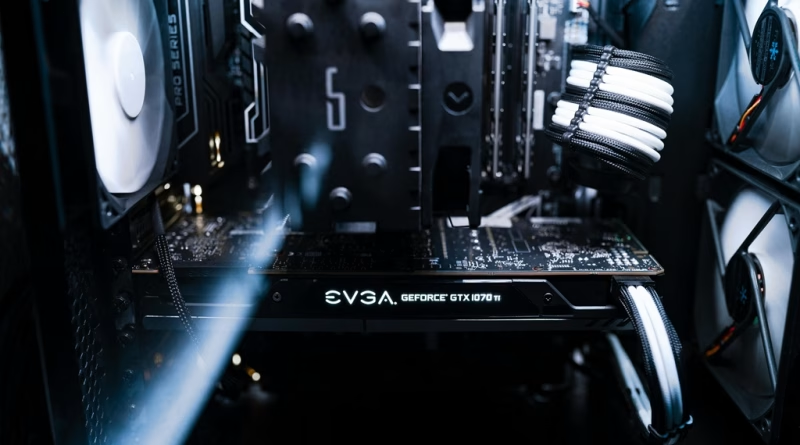Rumor Mill: What’s Leaked About the Next-Generation Graphics Cards?
The current generation of graphics cards, led by Nvidia’s RTX 40-series and AMD’s RDNA 3 lineup, has delivered incredible performance, making 4K gaming and AI-powered features like DLSS and FSR mainstream. But in the relentless world of silicon, today’s champion is tomorrow’s baseline. All eyes are now on the horizon, eagerly awaiting the next great leap in graphical power.
The rumor mill is churning at full force, with leaks, supply chain whispers, and cryptic shipping manifests painting a fascinating, if fuzzy, picture of the next generation. Codenamed “Blackwell” for Nvidia’s RTX 50-series and “Navi 4” for AMD’s RDNA 4, these cards promise to be monstrously powerful.
We’ve sifted through the noise and connected the dots. Here’s what the rumor mill is saying about the next great GPU showdown.
The Big Picture: AI, Power, and New Memory
Across both camps, a few key themes are emerging. This generation won’t just be about more raw rasterization performance; it’s about building smarter, more efficient architectures to handle the demands of AI and next-generation gaming.
- GDDR7 Memory: This is one of the most consistent rumors. The move from GDDR6/6X to the next-generation GDDR7 memory standard is expected to deliver a massive leap in memory bandwidth. This is crucial for pushing higher resolutions, more complex textures, and feeding the data-hungry AI cores.
- The AI Engine Gets an Upgrade: Expect both Nvidia and AMD to dedicate even more silicon real estate to their AI and machine learning cores (Tensor Cores for Nvidia, AI Accelerators for AMD). The next generation of AI-powered upscaling (DLSS 4?) and frame generation will be a primary selling point.
- The Power Problem: The biggest question mark is power consumption. The top-end cards of the last generation were notorious for their high power draw. Leaks suggest that while efficiency is a major focus, the flagship RTX 5090 and its AMD counterpart could still be 450W+ behemoths requiring serious cooling and power supplies.
Team Green: Nvidia’s “Blackwell” (RTX 50-Series)
Nvidia is expected to continue its focus on dominating the high-end with an emphasis on its AI and ray tracing ecosystem.
- A New Architecture: Leaks point to a new “multi-chip module” (MCM) design for the top-tier “GB202” GPU (the likely heart of an RTX 5090). This is a significant architectural shift, moving away from a single large die to a design that connects multiple smaller chiplets. This can improve yields and allow for more powerful and complex designs.
- AI-Powered Everything: Expect Nvidia to lean even harder into AI. Rumors suggest next-gen Tensor Cores that will not just improve DLSS, but could also power “AI-driven NPCs” in games, more realistic physics simulations, and even on-the-fly texture generation.
- DisplayPort 2.1 & PCIe 6.0: The new cards are expected to fully adopt the DisplayPort 2.1 standard, enabling ultra-high refresh rates at 4K and beyond. There are also whispers of early support for the PCIe 6.0 interface, future-proofing the cards for the next generation of motherboards.
Team Red: AMD’s “Navi 4” (RDNA 4)
AMD’s strategy appears to be focused on delivering incredible efficiency and value, potentially ceding the ultra-high-end “halo product” crown to Nvidia while dominating the mainstream market.
- A Focus on Efficiency: Some of the more credible rumors suggest that AMD might not release a direct competitor to the RTX 5090. Instead, they are reportedly focusing their RDNA 4 architecture on maximizing performance-per-watt, aiming to deliver RTX 4090-level performance at a much lower power consumption and price point.
- Next-Gen FSR and Ray Tracing: AMD has been playing catch-up on ray tracing and upscaling. RDNA 4 is expected to feature redesigned Ray Accelerators for a significant performance uplift in ray-traced games. Expect a new version of their FSR upscaling technology that further closes the gap with Nvidia’s DLSS.
- Aggressive Pricing: If AMD does forgo the ultra-high-end, it could allow them to be extremely aggressive on the pricing of their high-to-mid-range cards, putting immense pressure on Nvidia’s most popular models (like a future RTX 5070 and 5060).
The stage is set for a fascinating battle. Nvidia appears to be pushing the absolute limits of performance and AI with a new architecture, while AMD may be playing a smarter, more efficient game aimed at the heart of the market. While nothing is certain until the official announcements, one thing is clear: the next generation of gaming is about to get a serious horsepower injection.




